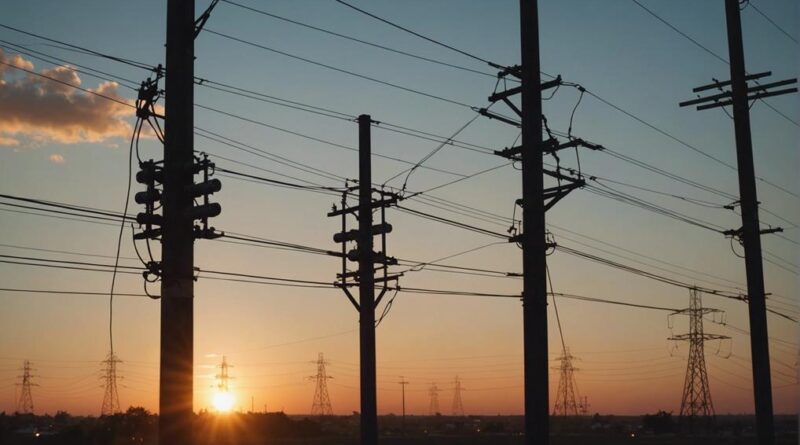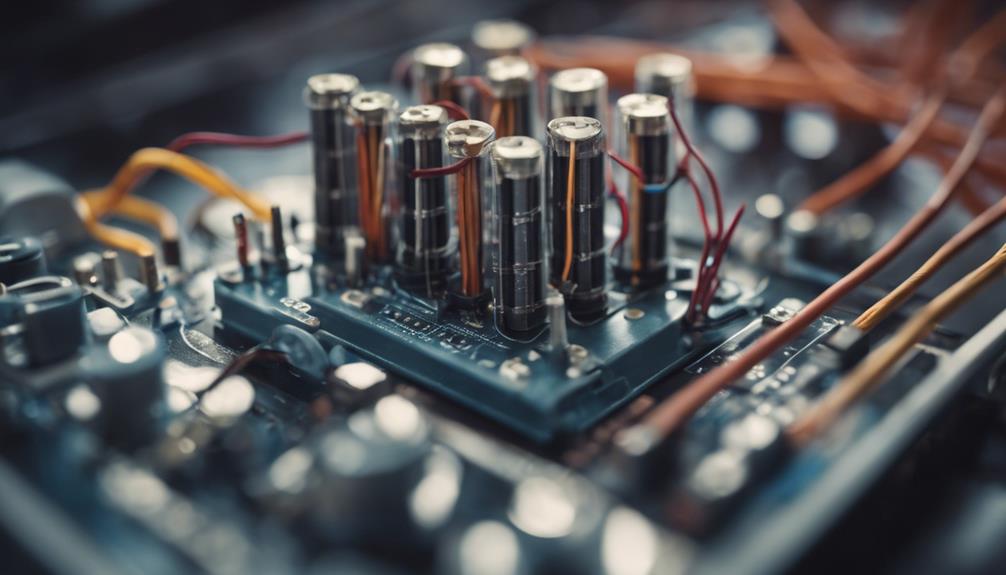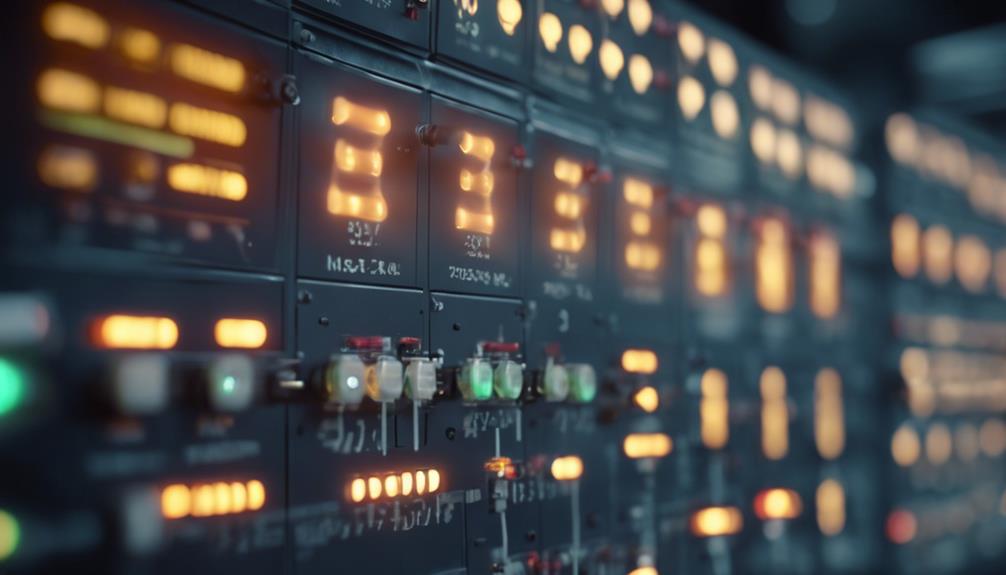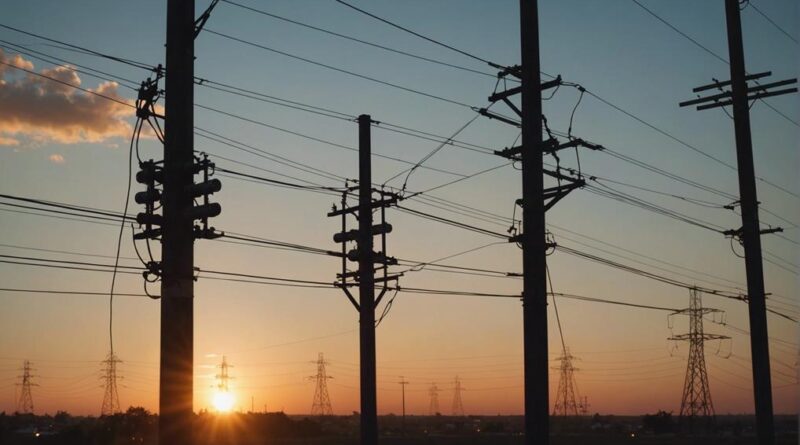
You've probably come across the concept of a Distance Relay If you're dealing with power systems, but have you ever thought about how important its accurate calibration is to your daily operations? These devices are not just for error detection; they are an essential part of the dynamic protection and management of electrical networks. By understanding the Protection Zones and how these relays react under error conditions you can improve system reliability and response strategies. Think about the last time a power outage was avoided – a remote relay probably played a key role. Now imagine what could happen if these systems evolved as technology advanced. What potential improvements could come soon?
The central theses
- Distance relays measure impedance to accurately locate electrical faults in power systems.
- They use zone configurations for immediate and backup response to failures, improving network stability.
- The main components include a measurement unit, a communication interface and a robust power supply.
- Advanced features integrate modern communication protocols and environmental durability for reliable operation.
- Future relay development will focus on miniaturization, sustainability and improving communication for greater performance and durability.
Basics of Distance Relays

Distance relays, essential for the protection of power systems, measure the electrical impedance between a source and a fault to determine precise error locations . Understanding error detection methods is important when exploring the field of power system protection. These methods rely heavily on the accuracy of the impedance measurement techniques . When a fault occurs, the function of the relay is to quickly and accurately assess the situation and ensure the stability and safety of the entire grid.
You will find that impedance measurement techniques are at the heart of how Distance Relay Function. By evaluating impedance or resistance to current flow, these relays can distinguish between normal operating conditions and fault conditions. This distinction is crucial because Relay response to different error scenarios can vary greatly in type and severity.
The accuracy of these measurements directly influences the effectiveness of the Error Detection Process . It's not just about acknowledging a mistake; it's about pinpointing its location to isolate and resolve the issue immediately. This feature prevents equipment damage and improves power reliability for consumers like you.
Operating principles
Let's examine how Distance Relays work by examining the principles that determine their functionality. Essentially, these devices are designed to determine the distance to a fault in the electrical network by measuring the impedance between the installation location and the location of the fault. The central idea is that impedance directly correlates with physical distance, allowing the relay to locate fouls effectively.
The key to how they work is this Zone Settings which are predefined areas in the system that help the relay decide how far away the fault is and whether to trigger a response. Typically, distance relays are configured with multiple zones. Zone 1 includes immediate areas generally configured to operate within 80-90% of the line to ensure quick release and minimal damage. Offer Zone 2 and Zone 3 Backup protection covering larger areas with delay Trigger features .
These trigger properties are crucial. They determine the relay response time based on the zone in which the fault is detected. Immediate zones trigger rapid responses to protect critical equipment, while backup zones allow time to better assess the situation. This multi-layer approach ensures reliability and stability in power distribution, minimizes outages and protects the grid.
Explanation of the main components

After we have looked at how Distance Relay works, let us now break down its main components to understand the role of each part in ensuring efficient error detection and system protection. You will find the Unit of Measurement in the center of a distance relay. This is where the magic happens; it calculates the impedance from the relay location to a fault. This measurement is important because it determines whether the relay will trip to isolate a fault.
Next there is this Communication interface which is essential for coordination with other relays and control systems. Ensures all parts of your power system communicate effectively, eliminating unnecessary downtime and improving system reliability.
The longevity of the components is of crucial importance in these systems. Components are designed for: high voltages AND electrical noise to ensure they last long and reduce maintenance needs. You must do the following Installation Instructions precisely to ensure top-notch performance and security. These guidelines will help you correctly position and configure the relay and avoid common installation errors that can affect performance.
Finally, the power adapter and auxiliary contacts play a supporting role, but are no less important. They ensure that the relay has the power and connectivity necessary to operate in all conditions.
Importance in energy systems
In power systems, distance relays are essential to maintain stability and avoid large-scale outages. You may not realize it, but these devices play a key role in ensuring that the energy you depend on is always available when you need it. This is how they make a difference:
- Fast error identification : Distance relays quickly detect and locate errors in the system. This quick response helps minimize the area affected by the error, thus maintaining system stability.
- System protection : By isolating problem areas, these relays prevent errors from spreading across the network. This is essential to avoid widespread outages that could lead to power outages.
- Efficient error analysis : They provide valuable data for failure analysis and enable faster recovery and future prevention strategies. Understanding why an error occurred is critical to avoiding similar problems.
- Load distribution : Distance relays help maintain balance between supply and demand across the network. Maintaining this balance is critical to stabilizing energy systems and preventing parts of the grid from becoming overloaded.
Advanced features and technology

Integrate distance relays now Cutting-edge technologies and advanced features that improve operational accuracy and flexibility. Thanks to the integration of sophisticated communication protocols, modern relays are smarter. These protocols allow relays to exchange data seamlessly and respond better to network conditions. It's no longer just about preventing errors, but also about managing them more intelligently.
Further and beyond Environmental resilience of these devices has improved significantly. They are designed and guaranteed for harsh conditions, reliable operation in extreme temperatures and corrosive atmospheres. This resilience is important because relays are often in challenging outdoor environments . They maintain their accuracy and functionality even when the weather doesn't cooperate.
You will see how these advancements improve the reliability of power systems and extend the life of equipment. With these technologies, you invest in a durable and adaptable system. The result? A more robust, responsive and efficient electricity distribution network .
Future trends in relay development
As we explore the advanced features of modern distance relays, we also want to explore the new trends that will shape their future development. Relay technology is evolving towards more efficient, compact and environmentally friendly designs. Various applications, from power distribution to industrial automation, will change due to several important advances that are shaping the way these systems work.
Here are the top trends to keep an eye on:
- Relay miniaturization : The search for smaller, more efficient devices is unstoppable. Future relays will likely be small but more powerful, making them easier to integrate into dense circuits and complex systems without sacrificing performance.
- Use of sustainable materials : With growing awareness about environmental impacts, the trend is to use materials that are less harmful to our planet. You will see more and more relays made from sustainable, recyclable or biodegradable materials.
- Enhanced Communication Functions : Expect the relays to feature advanced communication protocols for better real-time data analysis and integration with IoT platforms. This means faster responses and more precise control in automated systems.
- Greater durability and reliability : Thanks to better materials and smarter design, the next generation of relays will be more durable and reliable even in extreme conditions, reducing maintenance needs and operating costs.
These trends will significantly impact your interaction with technology and provide safer, faster and more sustainable solutions in electrical systems.
Conclusion
As you have seen, Distance Relays are essential to ensure efficient and safe Power Distribution . They locate faults quickly and make your electrical grid more reliable.
By better understanding its components and how they work, you can better appreciate their role in stabilizing electrical grids. As technology advances, you can expect even smarter relays with error detection and system resilience.
Monitor future developments to ensure a robust and responsive Energy Infrastructure solution.

